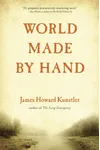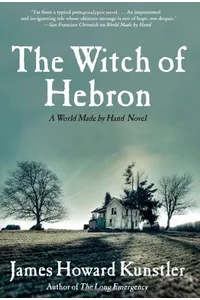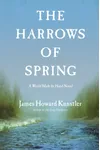Step into the hauntingly vivid world of James Howard Kunstler’s World Made by Hand series, where a post-apocalyptic America trades skyscrapers for small-town survival and modern tech for handcrafted hope. This dystopian saga, blending social science fiction with a touch of nostalgia, invites readers to Union Grove, New York, where life after catastrophe feels like an 'enlightened nineteenth century'—gritty, communal, and strangely uplifting.
With its blend of raw human drama and cautionary storytelling, the series captures what happens when civilization’s plug is pulled, forcing folks to rebuild with their hands, hearts, and grit. Ready to explore a future that feels eerily possible? Let’s dive in!
How World Made by Hand Began
James Howard Kunstler, a cultural critic and novelist born in New York City in 1948, crafted the World Made by Hand series as a fictional extension of his nonfiction warnings about oil dependency and urban sprawl. His books like The Long Emergency (2005) and The Geography of Nowhere (1993) predicted societal collapse due to 'peak oil,' and in 2008, he spun these ideas into a novel set in a shattered America. Inspired by his Upstate New York roots, Kunstler chose Union Grove as the stage for a story about resilience, community, and the cost of modernity’s collapse.
The Heart of World Made by Hand
The series spans four novels, each set in a season of a single year in Union Grove. The first, World Made by Hand (2008), introduces Robert Earle, a carpenter and former tech worker navigating a world ravaged by terrorism, pandemics, and oil scarcity. As mayor, he grapples with local gangs and a mysterious religious sect, the New Faith Church. The Witch of Hebron (2010) shifts to autumn, blending supernatural hints with tales of a local healer, while A History of the Future (2014) explores winter’s tensions as Robert’s son returns with news of new nations. The Harrows of Spring (2016) wraps up in spring, tying loose ends with themes of renewal.
Kunstler’s themes dig deep into local, sustainable living and the fragility of modern infrastructure. The series isn’t just about survival—it’s a critique of suburbia’s dependence on cheap energy, wrapped in a soap opera of romance, violence, and community spirit. Union Grove’s 'enlightened nineteenth century' vibe, with its horse-drawn carts and candlelit soirees, feels both nostalgic and sobering, showing how people rediscover purpose when stripped of distractions.
The style is intimate, told through Robert’s grounded narration, with vivid depictions of Upstate New York’s rivers and decay. While some find the pacing slow or the patriarchy nostalgic, fans praise its world-building and plausible grit, calling it a 'realistic post-apocalyptic journey' that balances despair with hope.
Why World Made by Hand Resonates
The series resonates with readers who crave speculative fiction that feels personal, not epic. Unlike blockbuster dystopias, it zooms in on one town’s struggle, making the stakes feel real and human. Kunstler’s foresight about energy crises, penned before oil prices soared, gives the series a prophetic edge, earning praise from outlets like the San Francisco Chronicle for its 'impassioned tale.' Its cult following among post-apocalyptic fans stems from its call to rethink how we live—less Netflix, more neighborly grit.
Though not a bestseller, the series’ influence lies in its challenge to embrace simplicity before crisis forces it. It’s a love letter to small-town resilience and a warning about overreliance on fossil fuels, making it timelessly relevant.
- Publication Years: 2008–2016
- Number of Books: 4
- Setting: Union Grove, New York
- Genre: Dystopian, Social Science Fiction
Grab World Made by Hand and dive into Kunstler’s post-apocalyptic vision—where survival is handmade, and hope is hard-won!



